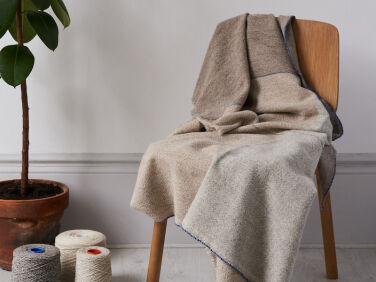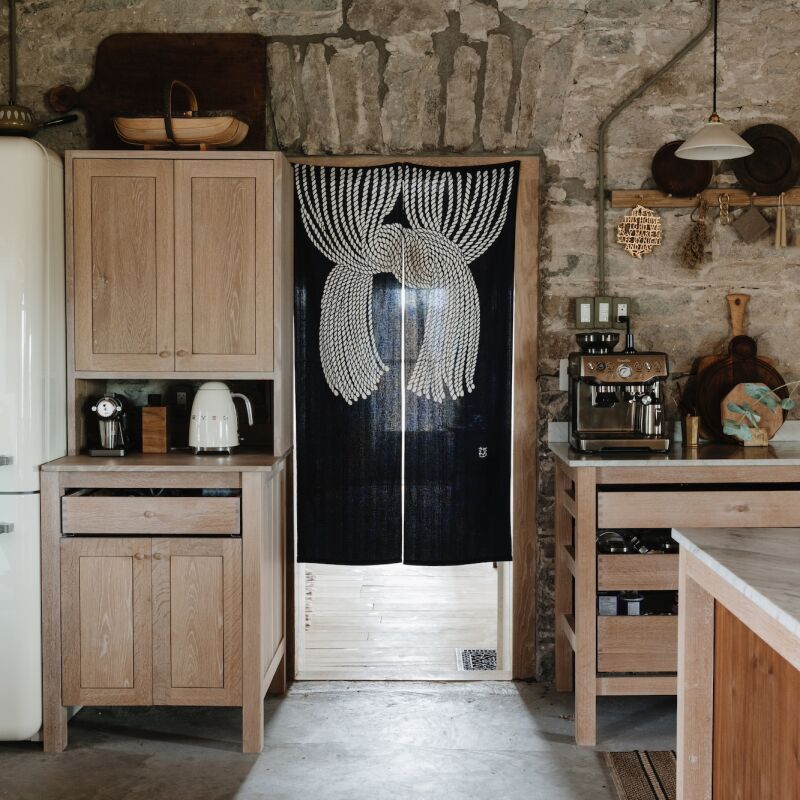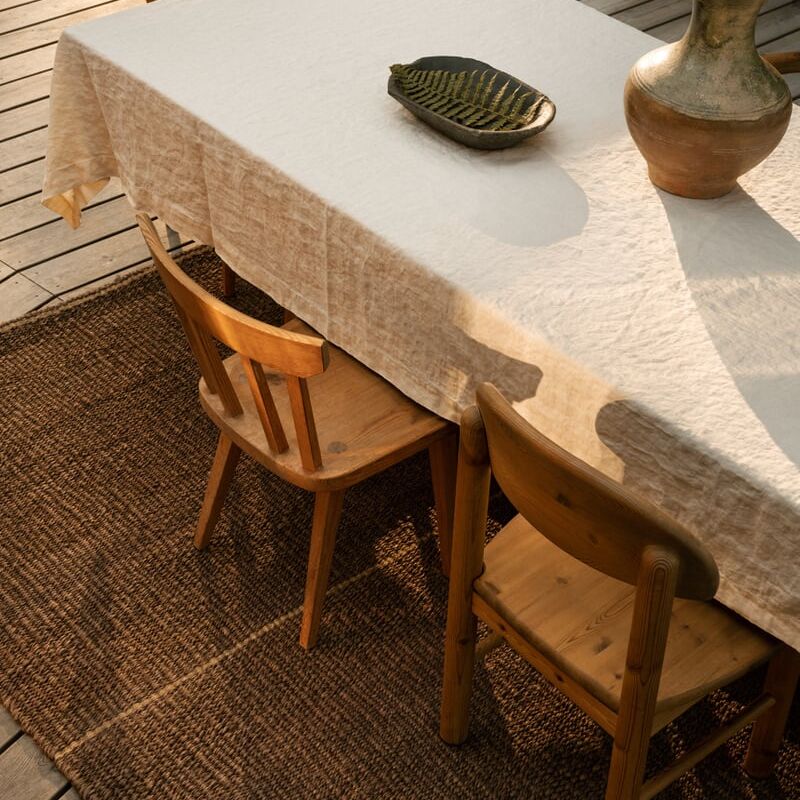Maria Sigma is a weaver whose work we’ve admired for some time. Her textiles—which include rugs, throws, cushions and wall hangings—are hand woven mostly from undyed wool and alpaca in her studio in East London. “Nature is beautiful as it is, and I want to believe that this also makes my work beautiful,” she explains.
Aside from the inherent sustainability credentials of wool (easy-care, long-life, non-allergic, odor resistant, renewable and biodegradable), Maria appreciates its transformable character: “Depending on the set-up of the warp, the weave pattern, and the finishing of the cloth, the end result could change completely from how it appears on the loom. It’s like it has its own life.”

Maria studied textile conservation in Greece, acquiring a deep, scientific knowledge of fibers, dyes, and techniques. At the end of the course, she felt “the creative element” had been missing, so she found a hands-on, traditional weaving seminar. “It combined everything I liked: creativity, math, and the use of machinery and tools. It was both functional and artistic: I fell in love with it.”

Maria moved to London to study for a second degree in textile design, specializing in hand-weaving. On graduating, she received the Cockpit Arts Clothworkers’ Foundation Award, which enables weavers to pursue a career in textiles. She was given access to studio space and looms, as well as business advice and mentoring. “That was the beginning of my practice,” she recalls. Two years later, in 2017, with support from The Princes Trust, she was able to buy her own loom and set up her own studio.




Maria cites her Greek heritage as inspiration, and many of her pieces are named after characters in Greek mythology. Her Ariadne throw, for example, takes its name from the heroine in Homer’s Odyssey who used a length of thread to help her lover. Her website describes the piece as “a handwoven blanket/throw made with natural undyed pure new British wool in shades of white and gray with hand-crocheted Aegean-blue edges, in a textured weaving-lace diamond pattern, which combines the Cycladic minimalism with the purity of the British landscape.”

Oftentimes, her inspiration is more amorphous: “I usually start from the materials and weaving techniques, with an abstract theme on my head —a feeling most of the times—and then, based on my current state of mind, the visual and the context will follow.”
Until recently, Maria’s pieces have been one-off commissions or made-to-order. Now, she is offering customers a succinct “ready-to-go” selection of products. “I really enjoy making work that explores a new idea, technique, or material,” she says. “Making something because I have the creative urge; these are the pieces that form my ready-to-go collection, all of which are either one-of-kind or limited editions.”

The weaving process is inherently slow going: it can take between three to eight days to set up the loom and then, depending on the dimensions and the intricacy of the pattern, it might take several weeks to complete a single piece. This is where sampling comes in: “It’s a vital part of my practice,” says Maria. “Weaving is a very slow practice and tricky to visualize, so working on a small scale is a quick way of testing ideas without wasting time or materials. Plus, it gives me the freedom to experiment with weaving and finishing techniques or materials that I’ve been mentally planning for some time.”


Maria’s textiles are now represented in contemporary craft galleries including The New Craftsmen and Flow Gallery in London, and Waikiki, a concept store on Andros in the Greek Cyclades (where Maria will be co-hosting a weaving/cooking retreat later this year). Even so, she still feels her work is far from perfect. “I keep learning, and that’s the beauty of it. Weaving can be limitless: there is so much space for exploration and experimentation. There are periods when I may use the same techniques/patterns/materials again and again and there are periods when I begin to look for something new. I guess, like everything in life, you need a change once in a while.”





Have a Question or Comment About This Post?
Join the conversation